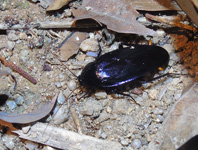Abstract
Helicopsis Fitzinger, 1833 is a mainly eastern European genus of the xerophilous Helicellinae (Geomitridae, Helicoidea; for family systematics see Razkin et al. 2015) that is characterized by two symmetrical dart and accessory sacs. This is probably the plesiomorphous character state within the Geomitridae and Hygromiidae. Therefore, the delimitation and relationships of Helicopsis remained questionable (Hausdorf 1996). Most Helicopsis species are characterized by a lateral attachment of the outer layer of the penial papilla at the penis wall so that a cavity is separated in the proximal part of the penis (Schileyko 1978; Giusti et al. 1992; Hausdorf 1996). However, a similar cavity is present in some other Helicellinae (e.g., Pseudoxerophila, Xerolenta, Xeromunda). Giusti et al. (1992) considered these cavities artefacts, but it cannot be excluded that they are actually homologous to the cavity of Helicopsis. Therefore, it is doubtful whether such a cavity can be considered as an autapomorphy of Helicopsis. About ten species of Helicopsis are spread from Turkey and Bulgaria to the Ukraine with a centre of diversity on the Crimean peninsula. Only the type species, Helicopsis striata (Müller, 1774) is more widespread from Alsace in the west, the island Öland in the Baltic Sea in the north to Bulgaria and Turkey in the south and western Russia in the east. Furthermore, species from Morocco, Greece, Cyprus, Iran and the Kopetdag were classified as Helicopsis. The relationships between these species have to be examined in more detail. Here we describe a new Helicopsis species from Iran.
References
Bazinet, A.L., Zwickl, D.J. & Cummings, M.P. (2014) A gateway for phylogenetic analysis powered by grid computing featuring GARLI 2.0. Systematic Biology, 63, 812–818.
http://dx.doi.org/10.1093/sysbio/syu031Giusti, F., Manganelli, G. & Crisci, J.V. (1992) A new problematical Hygromiidae from the Aeolian Islands (Italy) (Pulmonata: Helicoidea). Malacologia, 34, 107–128.
Gural-Sverlova, N.V. (2012) Predvaritelnye resultaty anatomicheskogo issledovaniya Mollyuskov roda Helicopsis (Hygromiidae) Kryma i Prichernomorskoy nizmennosti. Ruthenica, 22, 15–34.
Hausdorf, B. (1996) Helicopsis aelleni n. sp. from Northern Iran, with remarks on Helicopsis Fitzinger 1833 (Gastropoda: Pulmonata: Hygromiidae). Archiv für Molluskenkunde, 126, 65–71.
Hesse, P. (1934) Zur Anatomie und Systematik palaearktischer Stylommatophoren. Zweiter Teil. Zoologica, 33 (85), 1–59, pl. 1–9.
Hudec, V. (1972) Poznámky k anatomii některých druhů plžů z Krymu. Časopis národního muzea, odd. přírodovědný, 141, 73–91.
Lanfear, R., Calcott, B., Ho, S.Y.W. & Guindon, S. (2012) Partitionfinder: combined selection of partitioning schemes and substitution models for phylogenetic analyses. Molecular Biology and Evolution, 29, 1695–1701.
http://dx.doi.org/10.1093/molbev/mss020Neiber, M.T. & Hausdorf, B. (2015) Phylogeography of the land snail genus Circassina (Gastropoda: Hygromiidae) implies multiple Pleistocene refugia in the western Caucasus region. Molecular Phylogenetics and Evolution, 93, 129–142.
http://dx.doi.org/10.1016/j.ympev.2015.07.012Razkin, O., Gómez-Moliner, B.J., Prieto, C.E., Martínez-Ortí, A., Arrébola, J.R., Chueca, L.J. & Madeira, M.J. (2015) Molecular phylogeny of the western Palearctic Helicoidea (Gastropoda, Stylommatophora). Molecular Phylogenetics and Evolution, 83, 99–117.
http://dx.doi.org/10.1016/j.ympev.2014.11.014Ronquist, F., Teslenko, M., van der Mark, P., Ayres, D.L., Darling, A., Höhna, S., Larget, B., Liu, L., Suchard, M.A. & Huelsenbeck, J.P. (2012) MrBayes 3.2: efficient Bayesian phylogenetic inference and model choice across a large model space. Systematic Biology, 61, 539–542.
http://dx.doi.org/10.1093/sysbio/sys029Schileyko, A.A. (1978) Nazemnye mollyuski nadsemeystva Helicoidea. In: Fauna SSSR. Mollusca III, 6. Nauka, Leningrad, pp. 1–384.
Zwickl, D.J. (2006) Genetic algorithm approaches for the phylogenetic analysis of large biological sequence datasets under the maximum likelihood criterion. Ph.D thesis, University of Texas, Austin, X+115 pp.

